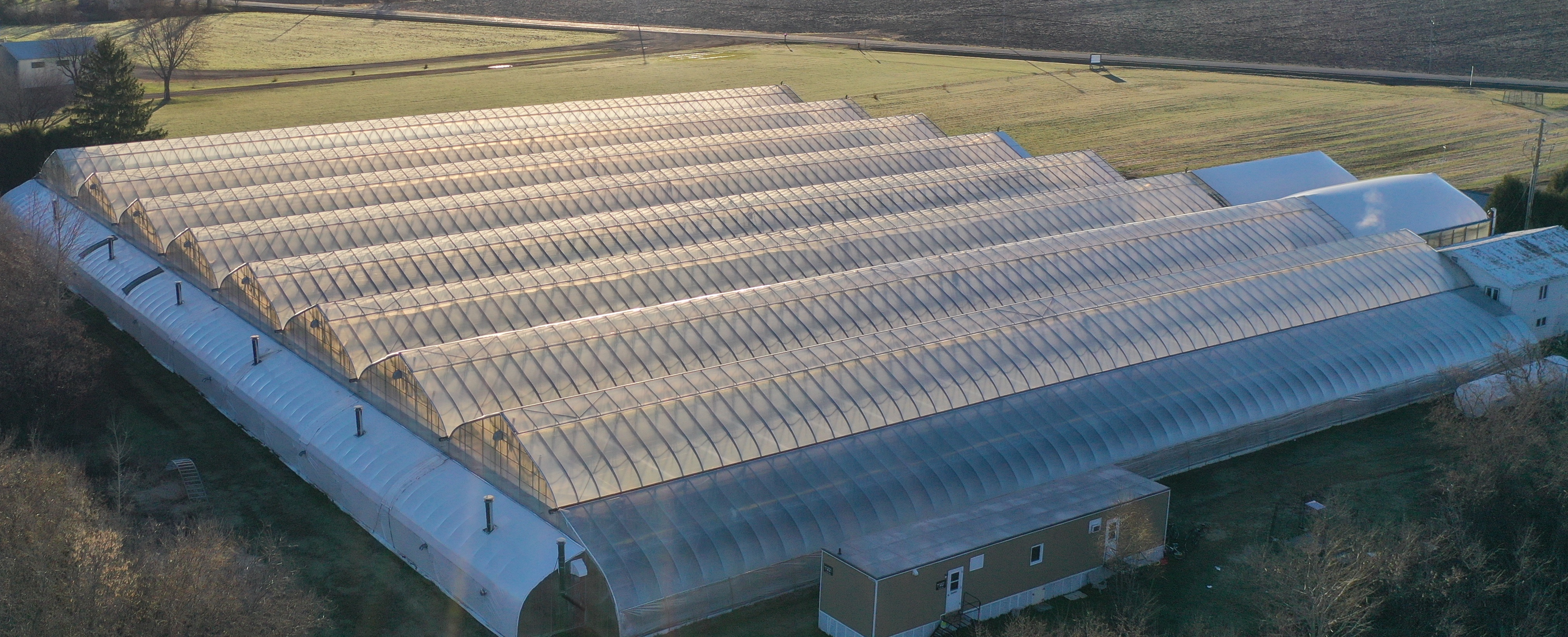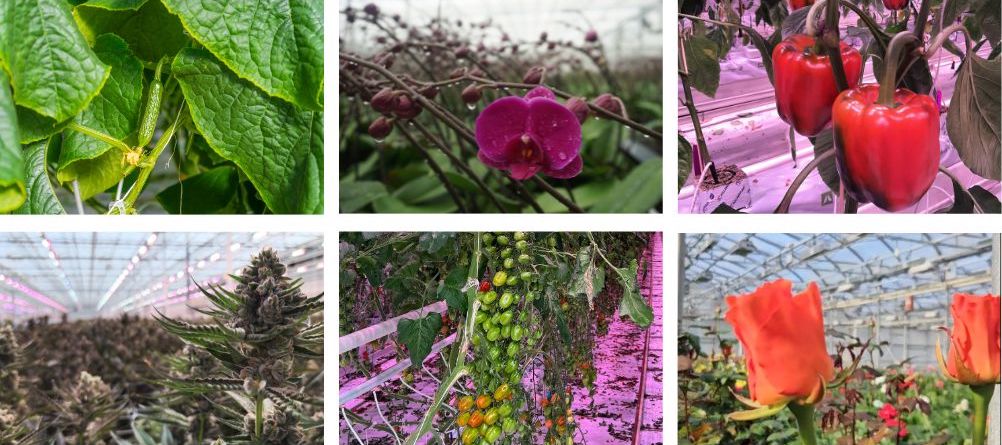In a controlled environment, growing is all about managing different parameters as best as possible compared to open field conditions.
Modern greenhouse led lighting systems combine energy efficiency with intelligent controls, allowing growers to optimize both plant development and operational costs.
Greenhouses give producers an edge to grow any crop, from juicy tomatoes to delicate orchids. When growing indoors, light is everything. We now know that traditional lighting just doesn’t cut it anymore. That’s why more and more greenhouse operators are switching to LED greenhouse lighting and reaping the benefits of lower energy consumption, healthier plants, and increased yields.
At Sollum Technologies, we specialize in adjustable-spectrum LED grow lights that adapt to your crops, your climate, and your goals. In this article, we explore why LED greenhouse lighting is more than just a trend; it’s the technology of 21st-century agriculture.
Why light matters in greenhouses
Plants depend on something called photosynthetically active radiation (PAR), which is the range of light wavelengths (400-700 nm) they need to photosynthesize. When plants receive the right kind of light at the right time, they grow faster, stronger, and more consistently.
However, natural sunlight isn’t always sufficient. This is especially true in northern latitudes, and even more so during winter months. Enter supplemental lighting.
High-pressure sodium (HPS) lights have been the go-to option for years. However, they are not the most energy-efficient. Adjustable LED greenhouse lighting provides a more customizable way to support your crops.

What to look for in a modern LED lighting system
Not all greenhouse LED lighting solutions are created equal. The best commercial led grow lights includes cloud-based platforms, AI-powered adaptability, and crop-specific recipes.To ensure maximum value, a system should be designed with the grower's evolving needs in mind. The most advanced and effective solutions include:
- Cloud-based control platform: a cloud-based platform allows growers to manage and monitor LED greenhouse lighting and energy consumption from anywhere.
- AI-powered adaptability: the lighting should automatically adjust its intensity and spectrum to maintain optimal levels as ambient light, seasons, or production goals change.
- Crop-specific "recipes": A dynamic lighting system must allow for crop-specific light recipes that growers can create and fine-tune in real time.
The advantages of using LED greenhouse lighting
LED greenhouse lighting offers numerous advantages over traditional systems.
- Improved energy efficiency
How much energy can you save? led greenhouse lighting systems use significantly less power than traditional grow lights, often reducing lighting-related energy consumption by 40% or more compared to HPS systems.This translates directly into lower utility bills and, for large-scale greenhouses, significant cost savings over time. This also reduces an operation’s carbon footprint and environmental impact. - Targeted spectrums
Full-spectrum LEDs allow growers to replicate sunlight with precision. However, the key advantage lies in dynamic control over that spectrum. While a static LED is an improvement, it cannot adapt. A dynamic system allows you to create custom light recipes to meet the specific requirements of different crops and growth stages. Whether encouraging rooting, vegetative growth, or flowering, the plants receive the exact light they need at all times. - Longer lifespan
Modern LEDs have a typical lifespan of over 50,000 hours; a dramatic increase compared to the 10,000-24,000-hour lifespan of HPS bulbs. This means fewer replacements, less maintenance, and more peace of mind. - Less heat, more control
Because LEDs emit less heat than HPS lights, it is easier to control the greenhouse’s temperature and humidity, both of which are crucial to plant health.
Dynamic LED lighting: precision agriculture’s secret weapon
Dynamic LED lighting takes your ability to control the greenhouse environment to the next level. These systems adjust the lighting in real time based on the greenhouse’s ambient conditions, crop type, growth stage, and exterior weather. In other words, it’s not a “set it and forget it” system; it’s responsive, adaptive, and completely under your control.
In a sense, dynamic LED lighting is like a smart thermostat. If you need more red light to encourage flowering or want to mimic the long sunny days of July in the dead of January, you can. Dynamic controls and cloud-based technology provide crops with a tailor-made lighting plan as per the crop needs.
Which crops benefit most from LED greenhouse lighting?
While nearly all greenhouse-grown crops can benefit from smart led light solutions for greenhouse cultivation, some definitely stand out
- Tomatoes and peppers: These light-hungry crops thrive under high PAR and customizable spectrums.
- Leafy greens and herbs: LEDs help produce tighter, more flavorful greens with less stretching.
- Flowers and ornamentals: Precise control over light intensity and photoperiod regulates bloom cycles and coloration.
- Berries: Supplemental lighting helps maintain consistent yields and sweetness year-round.

Measuring grow light efficiency and return on investment
How do you know your lighting system is performing effectively?
One key metric is grow light efficiency, measured in micromoles per joule (µmol/J). It indicates how much usable light is produced for every unit of energy. The higher the number, the better the performance.
A dynamic horticultural lighting system engineered for top-tier efficiency directly translates into stronger crops, higher yields, and reduced energy costs. For example, if you’re growing tomatoes in Ontario in January, you can recreateJuly’s sunshine without the soaring electricity bill.
Depending on the crop, objectives and suage, growers see a full ROI in less than five years, thanks to energy savings, reduced maintenance, and improved yields. For example, A tomato grower in Ontario, for example, can replicate July’s powerful sunshine in the middle of January without the crippling electricity bill that would come from HPS lights.
Other advantages include:
- Precise spectral control leads to better color and more uniform growth, increasing the percentage of Grade A products.
- Reduced pest and disease pressure, thanks to tighter environmental control. The lower heat output of LEDs helps maintain a stable environment. This stability disrupts the lifecycle of common pests and fungi that thrive in the temperature fluctuations caused by HPS lights, reducing the need for costly interventions.
- Shortened growth cycles by providing an ideal light recipe 24/7, independent of weather or season, growth cycles can be shortened and harvests become more predictable.
In an industry where margins can be tight and competition is fierce; these outcomes make a real difference.
Looking ahead: the future of greenhouse lighting
The greenhouse of the 21st century is data driven, energy efficient, and adaptable. LED greenhouse lighting is at the center of that evolution.
As global food demand increases and climate conditions become more unpredictable, agricultural companies need smart, scalable solutions they can rely on. Choosing Sollum’s LED lighting solution is an investment in a partnership. Our team of engineering, technology, and agronomy experts is available remotely or on-site to help you succeed. We work with you to create a custom plan tailored to your crops, your climate, and your business goals, ensuring you grow smarter, not just brighter.
Are you ready to learn how LED greenhouse lighting can transform your crop production? Get in touch with our team today by calling 866-220-5455 today. We’ll help you create a custom plan tailored to your crops, your climate, and your business goals.
Related posts
See dynamic lighting in action
Discover how greenhouse growers are using dynamic LED lighting to boost yield, cut energy costs, and gain full control over their lighting strategy.
Explore our business cases








